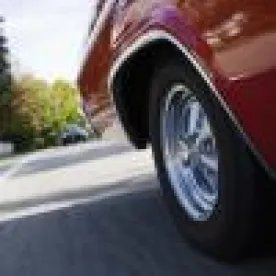Each year the average American spends 293 hours behind the wheel of a car. With all this time spent driving, it would be unrealistic to expect an individual to focus on the road 100 percent of the time. Unfortunately, a consequence of this loss of focus is an increased likelihood that a car accident will occur. In 2015, 10 percent of fatal crashes, 15 percent of injuries and 14 percent of all police-reported motor vehicle traffic crashes were reported as distraction-affected crashes. When a distraction-affected accident occurs, the first reaction of an adjuster may be to concede liability. After all, the insured driver was distracted. However, just because a person was distracted does not necessarily mean they are legally at fault for an accident. With the right strategy, one can successfully defend and prevail on a distracted driving−related accident claim.
WHAT IS A DISTRACTION?
To be distracted means to have one’s thoughts or attention drawn away. Today, when you hear the term “distracted driver,” your first thought may be someone using a cell phone while driving. However, distractions come in a variety of forms. Anything that takes your focus off the road can be a distraction, not just electronic devices. Distractions can be boiled down into three categories: visual, cognitive and manual.
A visual distraction takes the driver’s eyes off the road. Examples include reviewing or typing a text message, changing the radio station, checking on a child in the backseat and looking at an object on the side of the road.
A cognitive distraction occurs when the driver’s mind is no longer focused on the road. The prime example of a cognitive distraction is talking on a cell phone, even when using a hands-free device. Nevertheless, a cognitive distraction can be something as simple as daydreaming or having a conversation with a passenger.
A manual distraction is anything that results in the driver lifting his or her hands off the steering wheel. Drinking or eating while driving are classic examples of a manual distraction. Smoking or applying make-up also would be manual distractions.
Not all distractions are viewed equally by the members of a jury. For example, compare the use of a cell phone to a child-based distraction. Both stimuli have the same effect on a driver: pulling the driver’s attention away from
the road. However, the use of a cell phone while driving is much more stigmatized. Fourteen states have banned the use of hand-held cell phones outright and 47 states have banned text messaging while driving. In contrast, a child-based distraction is not met with the same social disapproval. Any juror with a child has likely been in the driver’s shoes, and may therefore relate to or empathize with the driver and excuse the behavior.
HOW TO HANDLE A DISTRACTED DRIVER CLAIM
Admitting liability is not always the best route to take in handling a distracted driver claim, at least not initially. Upon receipt of a claim, a claims professional or attorney will need to thoroughly investigate all circumstances surrounding the accident. This initial investigation is the key to setting up a strategy to defend the claim. A number of potential variables may have contributed to the accident, any one of which may excuse or negate the driver’s liability. The plaintiff may very well have been negligent or distracted, or the vehicle may have malfunctioned. The plaintiff’s own negligence may have been a superseding cause of the accident or circumstances unrelated to either driver may have been the cause. It takes time to make such determinations. Ultimately, conceding liability may help facilitate settlement of the case. Until that point, the best course of action is to keep every possible avenue of defense available.
Another important consideration when preparing a defense of the distracted driver claim is the driver’s attitude toward the accident. In some cases, it may become necessary to change the driver’s attitude. It is a reasonable reaction to feel guilty after an accident, especially if you were distracted in some way. However, it is important to remember that even being a “cause” of an accident does not necessarily mean you are legally culpable. Helping the driver understand the difference between the two can go a long way toward getting the best testimony possible. The way the driver interprets the accident will influence his or her testimony during depositions and trial.
The exact strategy taken at trial will be tailored to the specific facts of the distracted driver claim. As explained earlier, the type of distraction will determine how aggressively you should confront the allegations in front of the jury. If you are dealing with a distraction that is largely disfavored, such as eating or talking on a cell phone, it is best to direct the jury’s attention elsewhere.
Inevitably, the plaintiff will emphasize that the driver was distracted – do not add to that emphasis. The jury has no incentive to forgive a disfavored distraction. Under these circumstances, intervening variables and the plaintiff’s contribution to the accident are going to be the foundation of your defense. It is better to subtly and indirectly fight these types of allegations.
In contrast, if the driver was distracted by a cause likely to gain sympathy, such as checking on a child, then this angle should be highlighted. Emphasize the distraction by explaining to the jury why the driver’s actions should be excused. Ask for the jury’s forgiveness, appeal to their sense of sympathy. After all, jurors are human, too.
As a claims professional or attorney, never jump to conclusions when you learn about a distracted driver claim. As the facts surrounding the accident begin to develop, various defenses to the claim may arise that can help mitigate or even completely eliminate the claim against your client. By making assumptions of responsibility, you can unintentionally miss the signs of an available defense. Instead, perform a complete investigation and wait until all the facts have been determined before reaching a conclusion as to causation or fault so you can successfully defend and prevail on a distracted driving−related accident claim.



 />i
/>i

